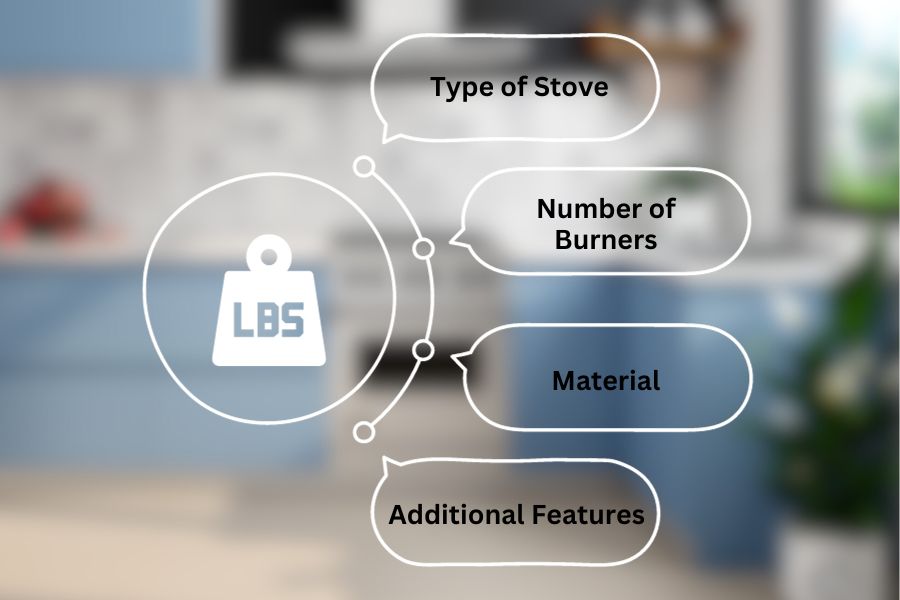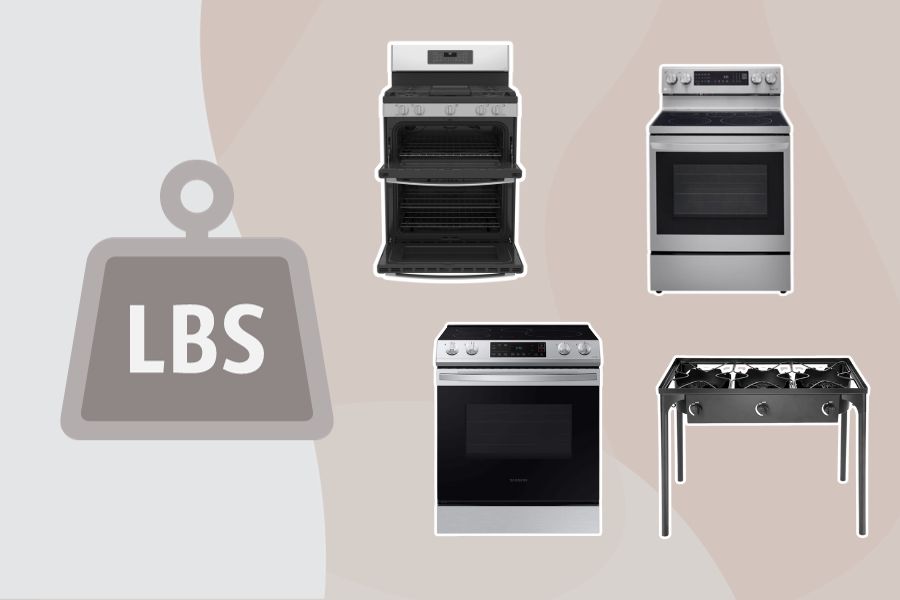Are you in the market for a new stove? Perhaps you’re moving into a new home or renovating your kitchen, and you’re curious about the weight of a stove. Understanding the importance of this essential appliance is helpful for transportation and installation purposes and for ensuring the structural integrity of your kitchen floor.
In this article, we will delve into the world of stove weights, exploring the factors that influence them and providing you with valuable insights to make an informed decision.
Whether you’re a curious homeowner or a diligent professional, join us as we uncover the secrets behind the weight of a stove and discover why it’s an essential consideration in your culinary journey.
How Much Does a Stove Weigh?
The weight of a stove can vary depending on factors such as type, size, and features. On average, stoves weigh between 40 and 200 pounds, with gas stoves heavier than electric or induction stoves.
It’s best to check the specifications of a specific stove model for accurate weight measurement.
Factors That Can Contribute to the Weight of Stoves

Type
Stoves come in various types, each with its own weight characteristics.
Gas stoves are the heaviest due to the additional components required for gas supply and burners. Electric stoves are generally lighter since they don’t rely on gas connections. Induction stoves, utilizing electromagnetic fields, are the lightest as they forgo traditional heating elements. Propane stoves, commonly used outdoors, are also lightweight and portable.
The type of stove you choose will impact its weight, so consider your cooking preferences and mobility needs.
Number of Burners
Another factor that can contribute to a stove’s weight is its number of burners. Stoves with a more significant number of burners generally tend to be heavier. This is because each burner requires additional components, such as heating elements or gas outlets, adding to the overall weight of the appliance.
So, if you envision a stove with a sprawling cooking surface and multiple burners to accommodate your culinary creations, keep in mind that it may be a bit weightier than a stove with fewer burners.
Material
The material used to construct a stove can also influence its weight. Stainless steel stoves, known for their durability and sleek aesthetic, are generally heavier than stoves made of other materials. The robust nature of stainless steel adds substantial weight to the appliance, providing a sturdy and long-lasting cooking companion.
Alternatively, stoves made of materials such as enameled cast iron or glass tend to be lighter. These materials offer unique advantages, such as excellent heat retention or a modern appearance, while keeping the overall weight of the stove more manageable.
If you prioritize a lighter appliance without compromising on functionality or style, exploring stoves made of alternative materials is a worthwhile consideration.
Additional Features
The inclusion of additional features can also contribute to the weight of a stove. Stoves with extras such as convection ovens, warming drawers, or built-in grills tend to be heavier than their more basic counterparts. These added functionalities often require additional components and mechanisms, which can increase the overall weight of the appliance.
If you find yourself drawn to the versatility and convenience of these extra features, be mindful of the potential increase in weight and ensure your kitchen or designated space can accommodate the stove accordingly.
By considering the type, the number of burners, material, and additional features of a stove, you can better understand its weight. Whether you prefer a robust gas stove, a sleek electric option, or a lightweight induction model, understanding these factors will help you make an informed decision that aligns with your cooking needs.
Type of Stoves and Their Weight

Gas Stoves
Gas stoves are known for their sturdy construction and reliable cooking performance. Regarding weight, gas stoves typically fall within the range of 40 to 100 pounds. The weight can vary based on factors such as the size of the stove and the additional features it offers.
Whether you opt for a compact gas stove for a small kitchen or a larger professional-grade model, you can expect a substantial appliance that will anchor your cooking space.
Electric Stoves
Electric stoves provide a convenient and easy-to-use cooking experience. In terms of weight, electric stoves generally range from 50 to 150 pounds. The specific weight can depend on the size of the stove and the features it incorporates.
From sleek and minimalist designs to larger electric ranges with multiple ovens, electric stoves offer versatility while still maintaining a manageable weight for installation and transportation purposes.
Induction Stoves
Induction stoves are renowned for their energy efficiency and precise control over heat. Compared to gas and electric stoves, induction stoves tend to be lighter. On average, they weigh between 20 and 50 pounds, making them a popular choice for those who value portability or have limited kitchen space.
Despite their lighter weight, induction stoves deliver impressive cooking capabilities, making them an excellent option for both amateur chefs and culinary enthusiasts.
Convection Ovens
Convection ovens are designed to circulate hot air evenly, resulting in faster and more even cooking. The weight of a convection oven can vary based on its size and features. On average, convection ovens weigh between 40 and 80 pounds.
Whether you’re looking for a countertop convection oven or a built-in model, understanding the weight will help you plan for installation and ensure your kitchen setup is suitable for the appliance.
Microwave Ovens
Microwave ovens offer quick and convenient cooking options for modern households. These compact appliances are designed to be lightweight and portable. The weight of a microwave oven generally ranges from 10 to 30 pounds. This lightweight nature makes them easy to move and position in your kitchen.
Whether you’re looking for a compact model for a small kitchen or a giant microwave with advanced features, their manageable weight allows for versatility in placement and transportation.
When choosing a stove, considering the weight and other factors such as functionality, space availability, and installation requirements will help you make an informed decision that aligns with your culinary needs and lifestyle.
FAQs
How Much Does a 36-Inch Gas Stove Weigh?
A 36-inch gas stove, specifically the Gas Pro Range with 4 burners and a griddle, has a net weight of approximately 397 pounds and a shipping weight of around 564 pounds.
How Much Does a Cast Iron Stove Weigh?
A cast-iron stove, known for its durability and classic appeal, typically weighs between 400 and 600 pounds.
Conclusion
In conclusion, the weight of a stove is influenced by various factors such as its type, size, material, and additional features. Gas stoves tend to be heavier, while electric and induction stoves offer lighter alternatives. The number of burners, material choice, and inclusion of features like convection ovens or warming drawers also impact the weight.
It’s essential to consider the weight of a stove when planning for installation, transportation, or if you have specific weight-bearing requirements for your kitchen.
By understanding the weight variations among different stove types and considering your cooking needs and space limitations, you can make an informed decision when selecting the perfect stove that meets your culinary requirements and integrates seamlessly into your kitchen environment.






